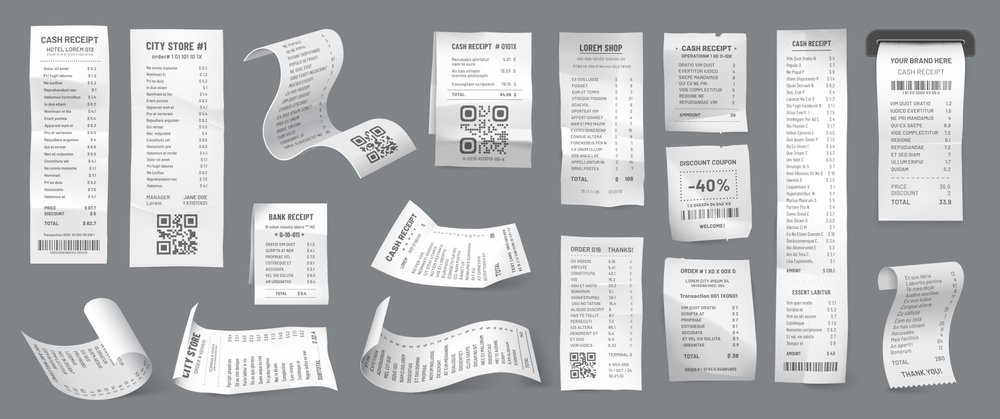In today’s digital age, the desire for novelty items is ever-growing. Fake ATM receipts have become a popular choice for those seeking a touch of mischief or humor in their lives. Whether it’s for a prank, a movie prop, or simply to impress friends, the demand for fake ATM receipt generators and printable fake ATM receipts has surged. But with this rise comes questions about authenticity and legality. Are these fake bank receipts truly harmless fun, or do they pose a risk? Let’s delve into the world of ATM receipts and explore their allure.
Exploring the World of Fake ATM Receipts
Imagine the look on a friend’s face when you show them a receipt displaying an astronomical balance, courtesy of a fake ATM receipt generator. These tools allow users to input custom details such as the account balance, transaction amounts, and even the bank’s logo. The result? A realistic-looking receipt that can fool even the most discerning eye. But beyond the realm of pranks, some individuals use printable fake ATM receipts for more serious purposes, such as creating alibis or falsifying financial records.
The Appeal of Novelty Receipts
The appeal of fake bank receiptsreceipts lies in their ability to provide a temporary escape from the mundane realities of everyday life. In a world inundated with responsibilities and obligations, the opportunity to engage in harmless mischief can be incredibly enticing. Unlike counterfeit currency or forged documents, which carry significant legal and moral implications, fake ATM receipts offer a low-risk avenue for creativity and amusement.
Furthermore, the allure of fake ATM receipts extends beyond mere novelty. They serve as a catalyst for social interaction, sparking conversations and eliciting reactions that transcend cultural and linguistic barriers. Whether shared among friends at a gathering or posted on social media for a wider audience, these receipts foster a sense of camaraderie and shared amusement.
Moreover, the act of creating and presenting fake ATM receipts can be an expression of individuality and wit. Crafting a receipt that boasts an outrageous balance or humorous transaction description requires a certain level of creativity and ingenuity, making it a form of self-expression for many. In a world where conformity often reigns supreme, the ability to inject a personal touch into everyday interactions is a welcome respite.
Navigating Legality and Ethics
While the creation and use of fake ATM receipts may seem innocuous at first glance, delving deeper reveals significant legal and ethical implications. Fabricating receipts with the intent to deceive or defraud is not only ethically questionable but also illegal in many jurisdictions. Depending on the severity of the offense, individuals caught engaging in such activities can face severe consequences, including fines and even imprisonment. Moreover, the repercussions extend beyond legal ramifications.
Using fake bank receipts to misrepresent financial information can have far-reaching effects, damaging reputations and eroding trust in institutions and individuals alike. In an era where transparency and integrity are paramount, the manipulation of financial records undermines the very foundation of trust upon which financial systems operate. Therefore, it’s imperative to exercise caution and discretion when dealing with activities involving ATM receipts.
By adhering to legal and ethical standards, individuals can avoid potential pitfalls and safeguard both their own integrity and that of the broader community. Responsible behavior entails refraining from using fake ATM receipts for deceitful purposes and instead embracing their novelty in ways that do not harm or mislead others. As stewards of integrity, we must uphold ethical principles and ensure that our actions align with the values of honesty and transparency.
Conclusion:
In a world filled with seriousness and routine, fake ATM receipts offer a welcome reprieve, injecting a dose of whimsy into everyday life. Whether used for harmless pranks or creative endeavors, these novelty items have captured the imagination of countless individuals. However, it’s crucial to approach their creation and use with care, respecting legal boundaries and ethical considerations. So, the next time you’re tempted to indulge in a bit of mischief, remember the allure of ATM receipts and embrace the novelty responsibly.
FAQ
Q: Are fake ATM receipts illegal?
A: While the creation and use of fake ATM receipts for harmless purposes may not be explicitly illegal in all jurisdictions, using them to deceive or defraud others can constitute fraud, which is a criminal offense.
Q: Can fake ATM receipts be used as evidence?
A: No, fake ATM receipts should not be used as evidence in any official capacity. They lack authenticity and can easily be debunked, making them unreliable in legal proceedings.
Q: Are there any legitimate uses for fake ATM receipts?
A: Some individuals use fake ATM receipts for harmless pranks, entertainment, or creative projects. However, it’s essential to use them responsibly and avoid misleading or deceiving others.
Q: Can I use fake ATM receipts for tax purposes?
A: No, using fake ATM receipts to falsify expenses for tax purposes is illegal and constitutes tax fraud. It’s essential to maintain accurate records and comply with tax regulations.
Q: Are there consequences for distributing fake ATM receipts?
A: Yes, distributing fake ATM receipts with the intent to deceive or defraud others can result in legal repercussions, including civil lawsuits and criminal charges. It’s crucial to understand the potential consequences before engaging in such activities.
Q: Is it possible to detect fake ATM receipts?
A: Yes, trained professionals and financial institutions can often identify fake ATM receipts through various means, including analyzing the printing quality, examining transaction details, and verifying with the issuing bank. Attempting to pass off fake receipts as genuine can lead to embarrassment and legal trouble.
Q: Are there reputable sources for purchasing fake ATM receipts?
A: It’s illegal to purchase or sell fake ATM receipts for fraudulent purposes. Any websites or individuals offering such services should be avoided, as engaging in these transactions can lead to legal liabilities and tarnished reputations.
